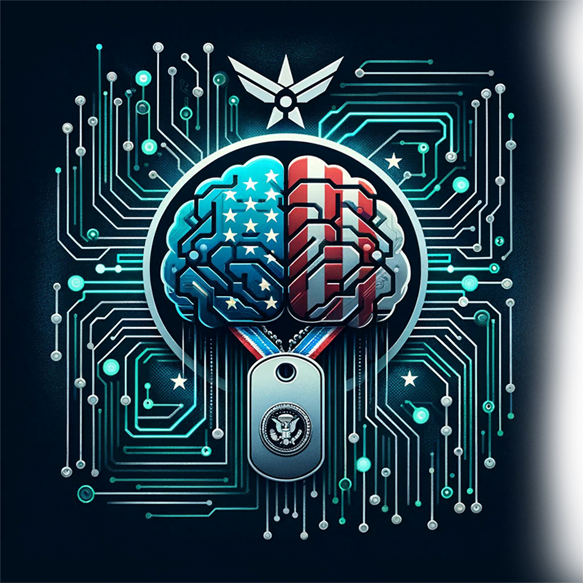
Zero Trust Security Solutions
Cloud Computing Technologies AI

Transforming for Innovation, Sustainability and Security
The Need for Better Security Architecture
What is Zero Trust Network Architecture?
- One must assume that the network is hostile at all times.
- There is a constant threat on the network, both internal and external.
- Being on the network is not a sufficient criterion for trust.
- Each device, and user must be authorized and authenticated at every stage.
- Security policies must be flexible and proactive, collecting information from all available data sources.
Transforming for Innovation and Sustainability securing future competitive advantage
Introducing Calico Enterprise Zero-Trust Network Security
- Workload Identity: First and foremost, multi-factor authentication via general metadata, network identity, and x.509 certificates applies to all microservices. Even after authentication, access is only given to destinations that the microservice has prior authorization to connect to.
- Least Privilege Access Control: The term access control should be rather self-explanatory. The least privilege part of the equation is what is so unique and great about Tigera’s Calico Enterprise Zero-Trust Network Security platform. It begins with a foundation of no trust for the device and then gradually provides access as required. This not only applies to traffic between microservices but also the flow of data into and out of the cluster. This broad approach protects the entire infrastructure stock.
- Defense in Depth: We’ve already explained that a foundational part of zero-trust networks is that some part of the network is assumed to be compromised at any given moment. As such, Calico Enterprise Zero-Trust Network Security makes a determination at every connection request. This determination depends on whether the request has been authorized at all three layers – the host, the pod and the container. If even one layer is observed to be compromised, then access is denied, and you are alerted to the issue.
- Data-in-Transit Encryption: When data moves between microservices it is especially vulnerable. Calico Enterprise protects all traffic by encrypting it with mTLS and IPsec encryption.
Requirements of a Zero-Trust Network
Requirement Implementation by Calico
- Multiple Enforcement Points: There are two separate enforcement points that any incoming request to your Kubernetes workload must pass through. The first enforcement point is the host kernel. Using iptables at L3-L4 Calcio’s policy is enforced in the Linus kernel. If the incoming request is able to get through this point, it still has to get through the envoy proxy. This policy is enforced in the Envoy proxy at L3-7, and each request is authenticated cryptographically. Multiple points of enforcement ensures that the connection request has to validate their identity more than once, ensuring maximum security and minimum risk. In doing so, requirement 4 of a zero-trust network is fulfilled.
- Calico Policy Store: Allowed flows are encoded in an allow-list in the Calico data store. This aims to fulfill the third requirement of zero-trust architecture. As previously mentioned, zero-trust requires a fair bit of flexibility for effective implementation. Calico enterprise provides plenty of it. Practically speaking, this component allows your network to have capabilities that legacy systems offered such as zones in tandem with zero-trust features like allow lists. What’s crucial is that these can be used simultaneously, if need be, layered on top of each other via the maintenance of multiple policy documents.
- Calico Control Plane: This feature aims to meet the expectations laid down by the 4th requirement of a zero-trust network. The plane transfers the policy information to the previously highlighted enforcement points. This ensures that any connection to the cluster must be authenticated and authorized at multiple entry points based on the security policies.
- Istio Citadel Identity System: Networks can be compromised through infrastructure points such as routers or links. To counteract this vulnerability, Tigera Calico Enterprise in tandem with Istio utilizes an Istio component by the name of Citadel. This component fulfills the second and fifth requirement of a zero-trust network by first, establishing cryptographic keys that that each service account must provide to validate its identity. Next, traffic is also encrypted using this same principle.
Generative AI Software Integration
Who is Zero-Trust For?
Given that the President of the United States has issued an executive order making the implementation of zero-trust architecture for Federal civilian agencies. This is a positive step in the right direction that should see more government agencies and other branches of the military seek out private sector assistance in implementing zero-trust architecture.

IN THE NEWS
Cloud Computing Technologies accepting applications from talented contributors.
Benefits of Zero-Trust Architecture

Two Decades of Superior Client Outcomes
Our clients and CCT celebrate two decades of superior client outcomes from multi-year contract engagements. We are honored, inspired, and grateful for these long-term relationships.
Migration to Zero-Trust Network Infrastructure
1. Clear Vision
What clients say about Cloud Computing Technologies






2. Construct a Plan
3. Graduated Scope of Zero Trust Security Solutions
Experience and Agile Expertise
Understanding the complexities and nuances of AI technologies can be a daunting task, even for seasoned IT professionals. That's where we come in. With our expertise and commitment to excellence, we bridge the gap between theoretical knowledge and practical implementation. Here is how we can help.
Hi, I'm Dr. Alan. I've been in your shoes, grappling with AI while pushing forward.
I deeply understand the need for expert guidance and specialized support in this challenging field. That’s why I founded Cloud Computing Technologies AI. My vision is to create a space where IT decision makers, like you, can find the resources, assistance, and cutting-edge solutions they need to propel their organizations to new heights.
My passion lies in demystifying AI and making it accessible and beneficial for all organizations, regardless of their size or industry. At Cloud Computing Technologies AI, we don’t just offer services – we provide a partnership. We’re here to guide you every step of the way, offering our extensive expertise, innovative solutions, and unwavering commitment to your success.

Benefits You Can Expect
Streamlined Business Operations
Enhanced Decision Making
Superior Customer Experience
What clients say about Cloud Computing Technologies
"Game Changer"

"Boosted Our Profitability"

"Customer Satisfaction and Loyalty"

How it works
Reach Out:
Initiate by clicking "Book a FREE Assessment" and take the first step toward unlocking innovative potentials. Were here to support you every step of the way on your AI journey to success.
Consult & Strategize:
We'lll sign your NDA if required and discuss your specific needs, challenges, and aspirations. Together, we'll identify key aspects that best align with your goals.
Implement & Thrive:
We’ll develop and integrate the tailored AI solutions into your business operations, paving the way for enhanced efficiency, informed decision-making, and superior customer experiences.
Here's What You'll Get...
- Expert Guidance: Benefit from our decade-long industry experience and knowledge in AI technologies.
- Customized Solutions: We provide AI solutions tailored to meet your specific business needs and objectives.
- Innovative Technologies: Stay ahead with access to the latest AI technologies and tools.
- Operational Efficiency: Our AI services automate repetitive tasks, increasing your business's operational efficiency.
- Enhanced Decision Making: Leverage our advanced predictive analytics for informed business decisions.
- Superior Customer Experience: Our AI tools such as intelligent chatbots ensure seamless customer interactions.
- Continual Support: We offer ongoing support to ensure the smooth running of AI solutions in your business operations.
- Risk Mitigation: Our robust AI solutions are designed to mitigate business risks and vulnerabilities.
- Scalable Solutions: As your business grows, our AI solutions can be scaled to match your growing needs.
- Competitive Advantage: By harnessing the power of AI, we help you gain a competitive advantage in your industry.





